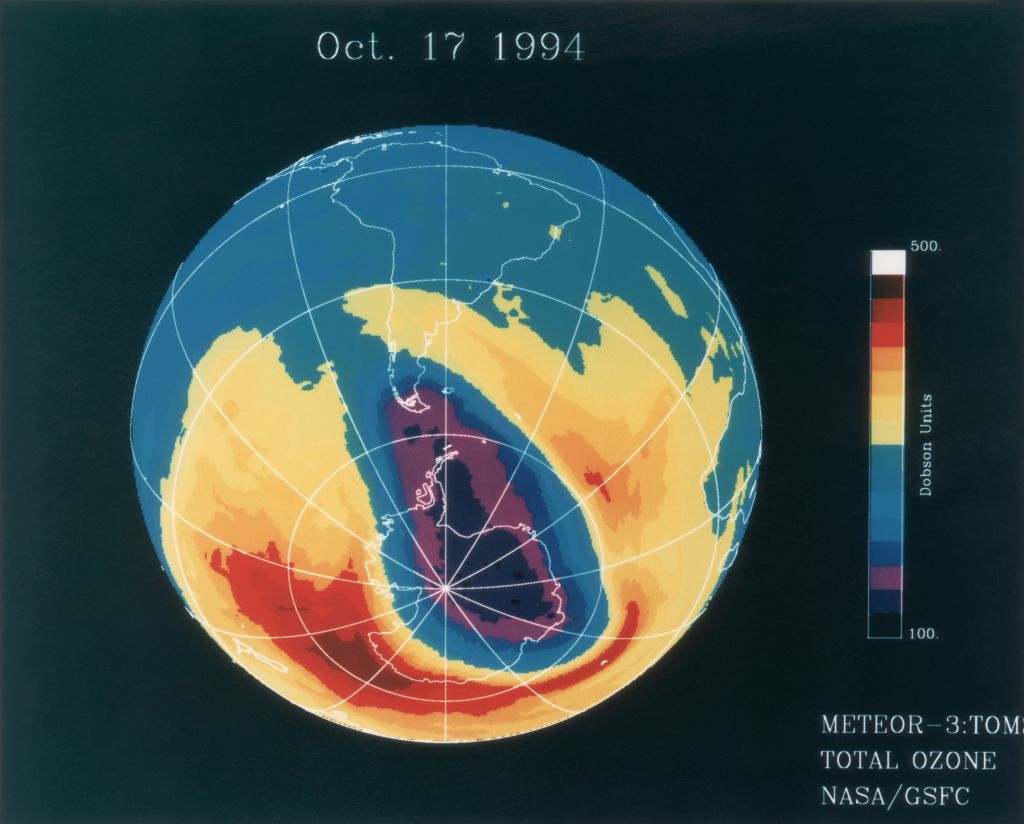UC Irvine research saved life on Earth as we know it

The hole in the ozone layer over Antarctica in 1994. UC Irvine scientists were the first to discover that common industrial chemicals were chewing through Earth's protective sunscreen.
Excerpt from "7 world-changing UC innovations that emerged from federal research funding" by Julia Busiek. Full story can be found here.
A recent UN panel found that the hole in the atmosphere’s ozone layer is on track to heal by midcentury. That’s stupendous news for life on Earth: Without the ozone layer to shield the planet from the sun’s harsh UV rays, plants would shrivel and die within a few weeks, and a five-minute stroll outside on a sunny July day would leave you with a bad sunburn.
That grim vision visited UC Irvine chemists Sherry Rowland and Mario Molina in the early 1970s. Through research funded by the federal Atomic Energy Commission, they discovered that chemicals called chlorofluorocarbons, or CFCs, destroyed the ozone molecules in the stratosphere. At the time, CFCs were big business, found in just about every refrigerator and air conditioner in Americans' homes, and every can of hairspray or deodorant in their cabinets. Rowland and Molina faced down consumer apathy and corporate denial as they dedicated their careers to spreading the word of CFCs’ dire consequences.
Fortunately, humanity acted. Following the 1987 Montreal Protocol, the worldwide agreement banning the use and sale of CFCs, the substances declined by over 95 percent. For their part in averting global catastrophe, Rowland and Molina won the 1995 Nobel Prize in chemistry.
More from UC Irvine: How UCI saved the ozone layer
